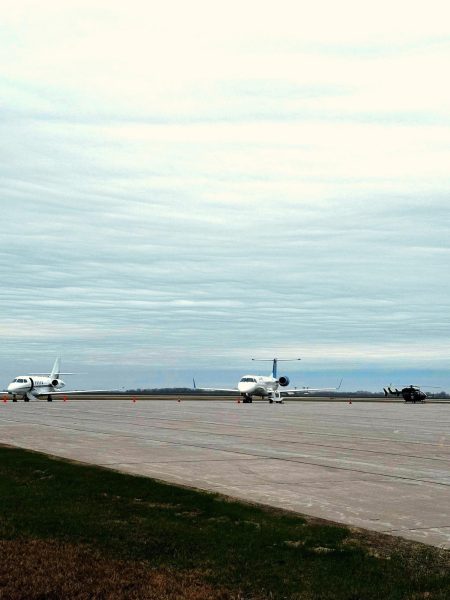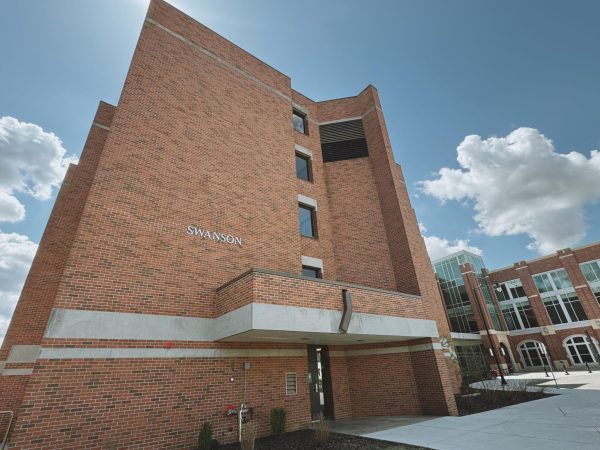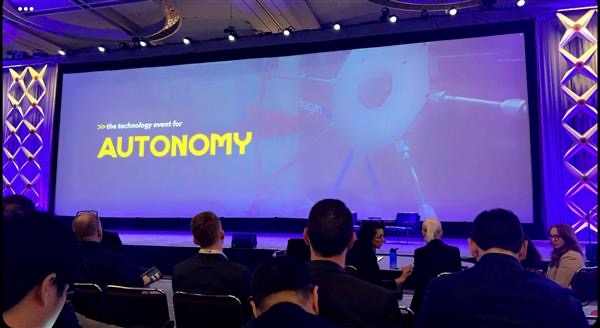Admission standards discussed
Incoming freshmen will face tougher acceptance criteria in upcoming years.
New and returning students gather during Welcome Weekend to watch a hypnotist at the Chester Fritz Auditorium. Admissions standards for incoming students could increase as early as next year. File photo.
Admissions standards for incoming college freshmen in North Dakota will be getting stricter as soon as next year.
The North Dakota University System has created a program called Pathways to Student Success, meant to improve graduation rates and the learning environment for college students throughout the state.
“(Pathways) came out of work in the State Board of Higher Education about a year ago,” UND Provost Thomas DiLorenzo said. “It’s a plan to elevate excellence.”
New standards
High school students who they think aren’t quite ready for college may not be accepted into either of the two four-year research institutions — UND and NDSU. Instead, they will be encouraged to attend one of North Dakota’s five community colleges, then re-apply to a four-year school later.
“I think it would be a positive to raise admission standards, because everyone thinks it is ‘so easy’ to get into UND and it makes us sound like a not very credible college,” UND junior and Grand Forks native Morgan Gruhot said.
UND’s current admission standards only require a 2.5 cumulative high school GPA and a score of 21 on the ACT, or a score of 18 if the student’s GPA is over 3.5, according to the university’s website.
Those who don’t meet the standards are still encouraged to apply and will have their application reviewed, but UND’s admissions staff is being much picker on these reviews than it used to be.
This falls under Pathways’ access category. The others are quality, affordability, learning and accountability, according to the North Dakota University System’s website.
Access
The access category involves an admissions index consisting of high school GPA, number of courses completed in the core areas such as math and English, ACT score, the difficulty level of the courses and if their grades trend in a positive direction.
“If a student performed poorly during their freshman year of high school, then their grades got higher during junior and senior year, that would be factor,” Assistant Vice President of Admissions and Financial Aid Sol Jensen said.
Once Pathways is implemented, North Dakota high school students will be able to track their success online and monitor their progress toward admission into their intended school, according to the NDUS website.
“Higher education needs to work better with K-12 to prepare students,” DiLorenzo said. “We need to look at those who are successful and work backward.”
Pathways’ new standards for automatic admission will be based on a mathematical formula: 3 x ACT score + 20 x GPA + 5 x number of core courses completed + 10 points if they’re a North Dakota resident. To get accepted into UND or NDSU, a student’s composite score must be at least 210.
Jensen said this number is about who seems more likely to graduate and be successful.
“It ties into performance,” Jensen said. “Everyone’s goal is to have higher retention and graduation rates. For those accepted, they will know they’re getting into what I believe is the top-notch institution in the state of North Dakota.”
A student with a lower score will be encouraged to take remedial courses at a community college. Although offered by UND and NDSU for no-credit, Pathways will require the classes be offered only at community colleges. These students may need them as a prerequisite for some of UND’s required Essential Studies courses.
Five percent of the 2011-2012 freshmen classes at UND and NDSU took remedial courses from those institutions, according to the NDUS website.
Other categories
For the quality category, Pathways will be creating the North Dakota High School to College Success Report, to provide parents and educators with feedback on how students from North Dakota K-12 schools performed in colleges throughout the state, according to its website.
The report will discuss factors such as success in entry-level Essential Studies courses and first to second year retention rates.
For affordability, NDUS will increase the amount of need-based financial aid, because “upwards of 70 percent of future job openings in the state will require some level of postsecondary education.”
Part-time and non-traditional students will be just as eligible for financial aid. Older students who dropped out but are returning to complete an unfinished degree will receive extra help through the Adult Learner Project.
The learning category will ensure that remedial courses and high school core courses align with entry-level Essential Studies courses, so students are better prepared.
Accountability will provide a uniform ratio for in-state versus out-of-state tuition and a uniform tuition model across institutions, based on type. For example, tuition will be the same price at UND as it is at NDSU. All community colleges will have the same tuition price.
All student fee amounts will be published on school websites so prospective students and their parents will know the true cost of education.
The tuition rate for students from bordering states and Canadian provinces will be 1.5 times the price for North Dakota residents. The Minnesota reciprocity rate will remain the same as it is now. The price for out-of-state and international students will be 1.75 times greater.
Many of Pathways’ new policies have already begun transition this year. Full implementation across the state is scheduled for Fall 2014.
Jaye Millspaugh is the multimedia editor for The Dakota Student. She can be reached at [email protected].







